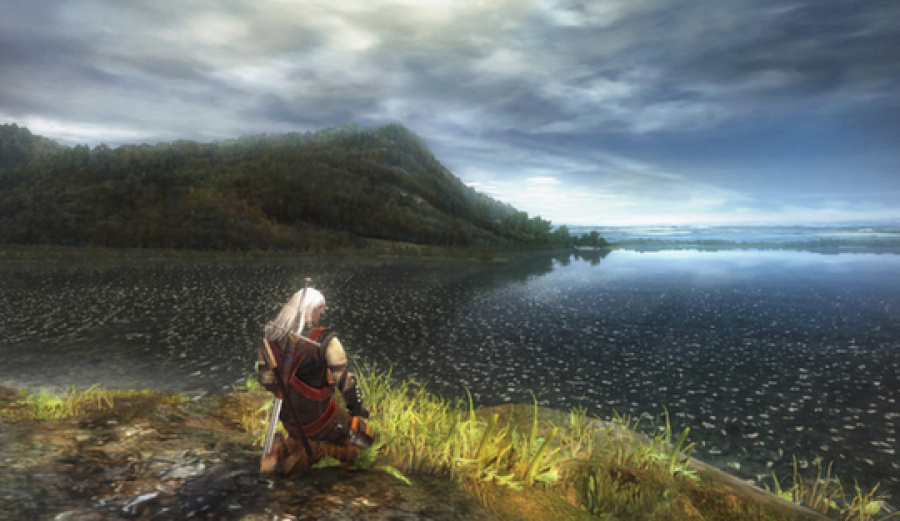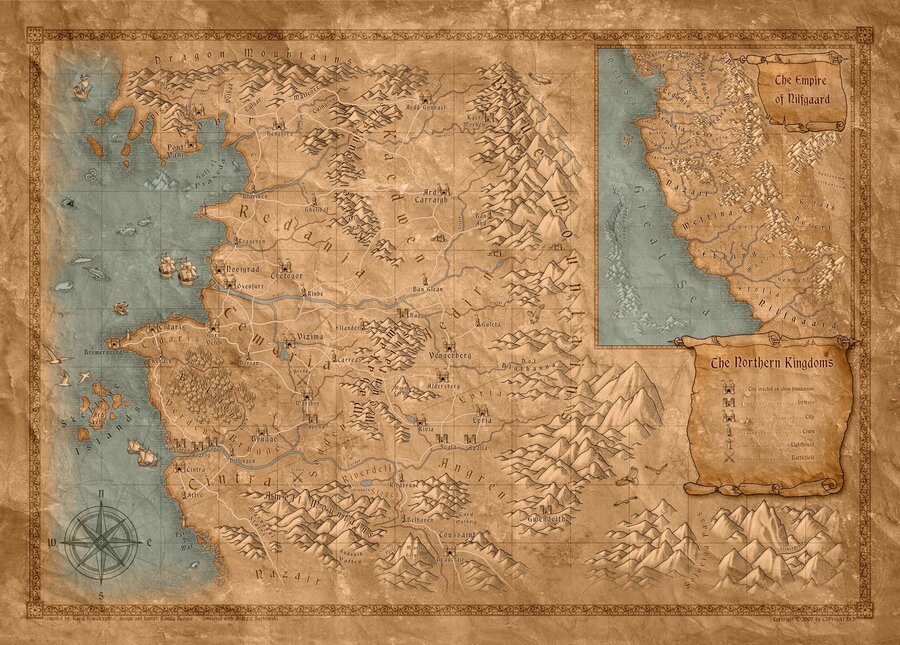
If you ask most people what the first Witcher game is, you'll likely get the same answer: CD Projekt Red's 2007 action, role-playing game, The Witcher. However, there's technically another game that was based on the world of Andrzej Sapkowski's Witcher books much earlier: the Polish multi-user dungeon (MUD) Arkadia.
The fanmade MUD (sadly only playable in Polish) came online all the way back in 1997 and it's still going strong today. It features two separate domains based on the worlds of The Witcher and Warhammer, and, among other things, lets you create a character, join guilds, and explore various locations by typing text commands into a parser.
It's easy to view Arkadia today as somewhat of an insignificant footnote when compared with the success of what came after, but what you might not know is that it actually had a hidden influence on The Witcher games that followed, with the MUD's world map serving as the basis for its counterpart in CD Projekt's games.

This connection was first brought to light in a forum post from 2009, where the user Lambert1234 squashed fan theories about a location called Gwendeith Fortress in the Blue Mountains being another Witcher school.
In the post, he shared a quote from the former CD Projekt Red community manager Paweł "Eriash" Majak, who debunked this "Witcher school" theory and confirmed the link to the MUD:
"The fortress took its name back to the time of LPMUD's Arkadia (a text-based online game set in the reality of Sapkowski's world). The fortress appeared there as a place where some of the elves who didn't want to take part in pointless skirmishes with humans and preferred to wait it out (the so-called "elves of the Siny Mountains") went. The inspiration was the Free Elves from the short story "The Edge of the World.
"The fortress was to be placed on top of a mountain, above three valleys, rising on successive terraces in the Siny Mountains. These valleys were to be inhabited by the Free Elves. Hidden deep in the mountains, they were to be the elves' chance to survive the period of human rule and await the Swallow. The valleys were named simply after their location ("Dol Aard" is the highest, third valley). The fortress is called "White Flame" from the impression it makes on people entering the valley. Its white roofs reflect the sun's rays, suggesting that the top of the mountain on which the fortress is located is on fire."
This Easter Egg always fascinated us, so earlier this year, we set out to find out more about how it came about in an article for Fanbyte. What we learned is that it actually goes far beyond just one reference to Arkadia's Elven guilds, with the general outlines of the map included in The Witcher being based on sketches that the Arkadia team produced in Warsaw in the early 2000s.

The former Arkadia member, and story designer/scripter on the first Witcher title, Karol “Leim” Kowalczyk was able to confirm this in our conversation, as was another Arkadia member Hubert “Hub” Śmietanka.
Kowalczyk told Fanbyte earlier this year about the creation of Arkadia's map:
"When we started, the most popular of the Continent was the Czech map (by Czech translator Stanislav Komárek). But it wasn’t [accurate] enough. When Sapkowski released further books, he added more and more details to the world. So he didn’t really think everything through, and we had to make some compromises between what is written in one book and what’s written in another.
"Basically, what we made is our own map. We met at some point and created this map of the continent at 200 years for the leader of Arkadia. Which is a bit based on the Czech map, but which also incorporated other maps that were at the time released, and what we already had — what roads we’d already created for our world.”
Śmietanka, meanwhile, recalls:
"A hand sketch was created at the meeting and it was taken by Leimgraill (Karol Kowalczyk) to redraw into a graphic file. A year later, he was among the developers of The Witcher with 2 or 3 other former Arkadia creators. To my surprise, I found "our" map in the game."
At the moment, The Witcher is currently being remade for modern consoles as an open-world game. This is clearly still a few years away, but it will be interesting to see what Polish studio Fool's Theory does with the reimagining of the fifteen-year-old title. Will we finally see Gwendeith in person? We bet it's unlikely, but hey, you never know!

